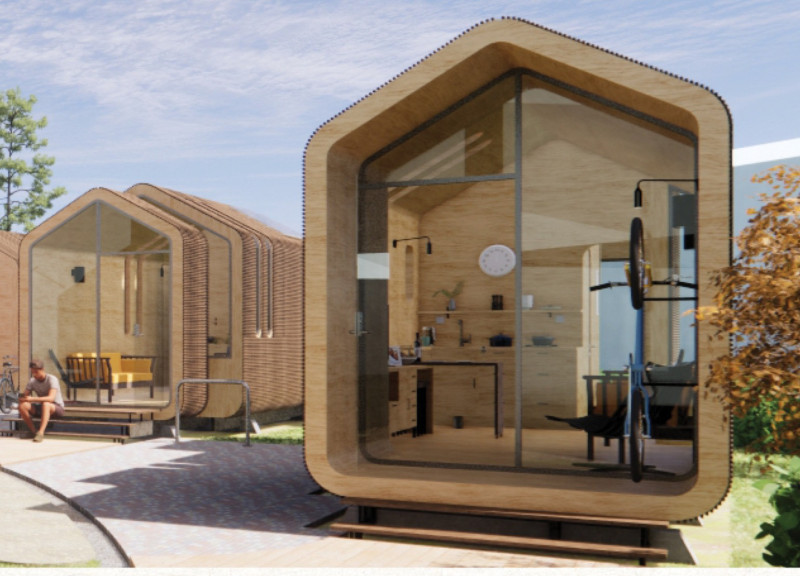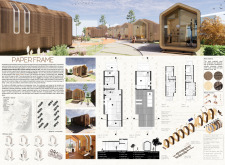5 key facts about this project
The Paper Frame project tackles the housing issues faced by young people in urban Australia, particularly in the expensive suburbs of Sydney such as Crows Nest, Redfern, and Marrickville. The design focuses on modular housing that allows for customization. It aims to provide young professionals and students with affordable and adaptable living spaces. This effort responds to the increasing demand for independent accommodations in a city with rising living costs.
Modular Design
The project features modular units that can be arranged in different ways. This flexibility enables residents to adapt their living spaces according to their specific needs. Each module serves several purposes, including areas for living, dining, study, and sleeping. By making the most of limited space, this design fosters a practical solution for urban living.
Sustainability Elements
A significant aspect of the Paper Frame is its emphasis on sustainability. The design incorporates solar panels on the roofs of the housing units. These panels are not just for show; they promote energy efficiency and reduce reliance on traditional power sources. This commitment to renewable energy aligns with current environmental goals, making the project more responsible and forward-thinking.
Materiality
The project uses cardboard and plywood as primary materials. Cardboard is notable for its strength and fire resistance when used in solid form. It provides a lightweight and robust option for modular construction. The ability to recycle cardboard enhances the project’s sustainability efforts. Plywood adds extra strength and flexibility to the structure, ensuring each unit can withstand daily use and environmental conditions. Concrete foundations and steel plates give the modular units a stable base, ensuring long-lasting performance.
Design Detail
The arrangement of these modular units allows for various design options, giving residents the chance to shape their home environments. This flexibility, along with a focus on sustainability, highlights how living spaces can be both personal and functional. The design blends practicality and individuality, meeting the needs of those who live in urban settings while reflecting their lifestyle choices.



















































